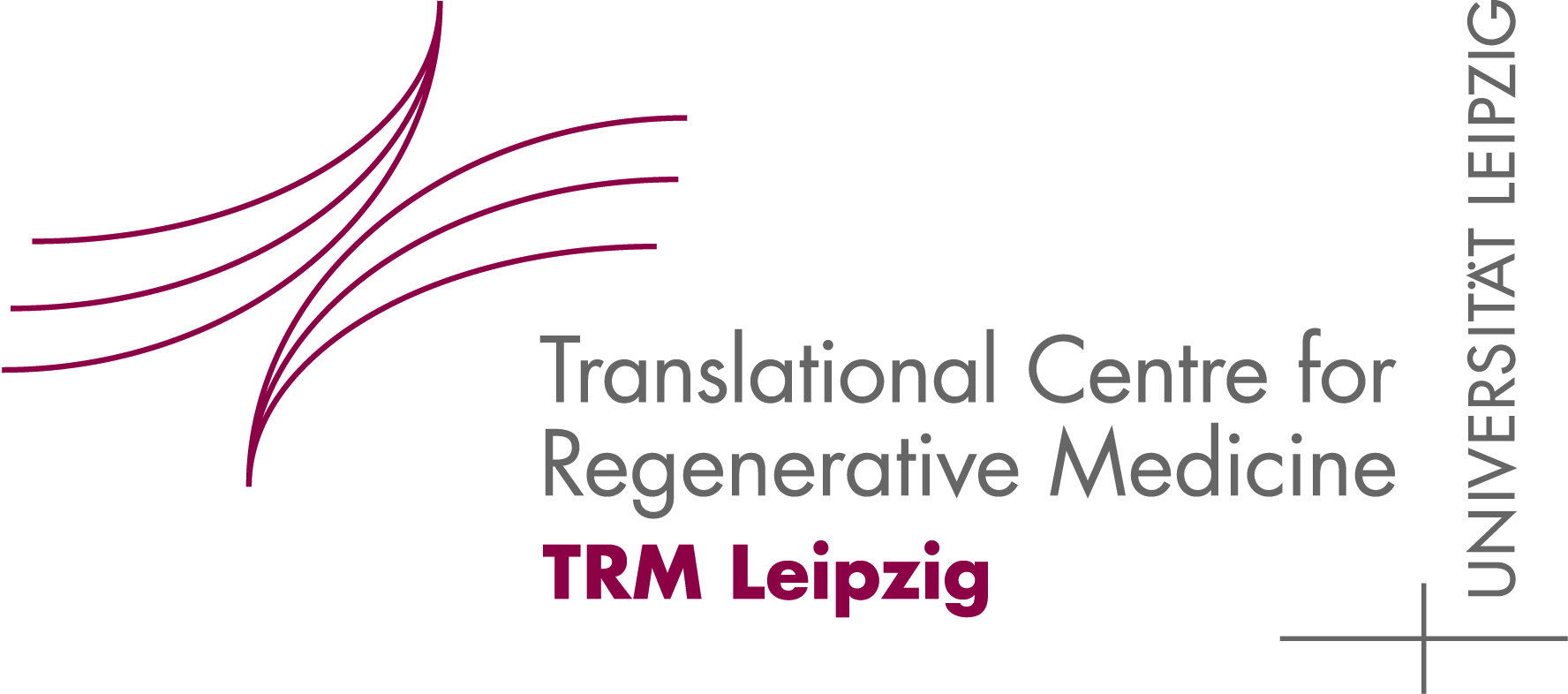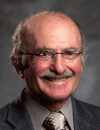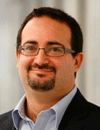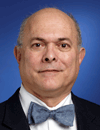08:30 | Morning Coffee and Networking in the Exhibit Hall. |
|
Session Title: NGS Sample Preparation and Migration of NGS into the Clinic. |
| |
|
Session Chair: Melanie Lehman, PhD |
| |
09:00 |  | Keynote Presentation Challenges for the Isolation and Preparation of DNA/RNA for Next Generation Sequencing
Michael Heller, Professor, Dept Bioengineering, University of California-San Diego, United States of America
|
|
09:45 | Next Generation Sequencing for Clinical Applications: Challenges to Developing Clinical Tests
Martin Siaw, Associate Scientific Director, Quest Diagnostics Nichols Institute, United States of America
|
10:15 | When Genomics Meets Human Health
Frank Ong, Associate Director, Illumina Inc, United States of America
The development of next-generation sequencing (NGS) technologies has made sequencing not only rapid and cost-effective, but also highly accurate and reproducible. These advances have increased the utility of NGS in clinical settings, with applications ranging from the identification of rare diseases to the detection of chromosomal abnormalities in maternal-fetal medicine. Deep sequencing and circulating free tumor DNA in the oncology space is also trending toward clinical utility. Regulatory clearance of NGS-based platforms and approval of clinical assays utilizing NGS technologies are also central to the wide-scale implementation of NGS in personalized medicine. |
10:45 | Reducing the Complexity of Clinical Omics Reporting for Clinicians and Laboratories
Jonathan Hirsch, Founder and President, Syapse, United States of America
Providing a clinical omics report that a physician can use in routine care has proven to be a challenge, driven by reliance on outdated tools such as fax machines. Syapse has built a cloud-based software platform that enables the use of omics at the point of care through an interactive web portal. We will describe how clinical omics labs use the Syapse platform to maintain an evolving omics knowledge base, which drives updated clinical reporting through interactive, intuitive interfaces designed for ease of use and comprehension. We will describe how hospitals use the Syapse platform to place omics results in the context of clinical guidelines, enabling physicians to easily adopt and integrate omics into their clinical workflow. |
|
TRM-Leipzig Sponsored Session: NGS in Regenerative Medicine and Access to the European Market |
| |
11:15 |  Technology Spotlight: Technology Spotlight:
Introduction to the TRM-Leipzig
Susanne Mueller, Project Head Education and Staff Development, TRM-Leipzig
The Translational Centre for Regenerative Medicine (TRM) of the Leipzig University based in Leipzig, Germany develops novel diagnostic and therapeutic methods of regenerative medicine and enables the rapid transfer of results into medical practice. In the framework of interdisciplinary research projects the TRM bridges the gap between basic research, clinical application and commercial exploitation. Its Service portfolio comprises Research and Development Services, Non-clinical Safety Testing, Preclinical Services and Continuing Education and Consulting.
|
11:30 | Tumorigenicity and Genome Stability in Potential Stem Cell-based Medicinal Products–Relevance of Cytogenetic Analysis in Respect to the Requirements of the European Pharmaceutical Market
Heidrun Holland, Investigator, TRM Leipzig, Germany
|
11:45 | Legal Requirements for the Access to the European Pharmaceutical Market and Legal Basis of GxP (GLP/GMP) for Cell Analysis within the European Pharmaceutical Market
Timo Faltus, Investigator, TRM Leipzig, Germany
|
12:00 | Characterization of microRNAs within the Regulation of Gene Expression in Regenerative Medicine Approaches
Nicole zur Nieden, Assistant Professor, University of California Riverside, United States of America
|
12:15 | Lunch and Networking in the Exhibit Hall. |
13:15 |  Technology Spotlight: Technology Spotlight:
Adventures in Next-Generation Sequencing: From Cancer Evolution to Point Mutation Detection
Clarence Lee, Associate Director, Life Technologies
|
|
Session Title: NGS for Studying Circulating DNA, CTCs, and Extracellular Vesicles. |
| |
|
Session Chair: Andrew Hill, PhD |
| |
13:45 |  | Keynote Presentation Noninvasive Personalized Genomics
Charles Cantor, Chief Scientific Officer, Sequenom Inc, United States of America
Most of the DNA in blood is contained in nucleated white blood cells. But a small amount of circulating DNA arises from distant locations. Most of this is short free DNA fragments produced by apoptosis. If these fragments have DNA sequence or epigenetic differences from the free DNA that arises from white blood cell death or breakage, characterization of the differences allows information to be obtained about remote sites in the body where apoptosis has occurred. Noninvasive prenatal testing based on circulating free fetal DNA fragments is a mature commercial endeavor. DNA sequencing is used to detect aneuplodies but more focused assays can also be employed to look at specific loci. In 2013 more than half a million women were tested noninvasively by plasma DNA sequencing. It is reasonable to expect that a similar analysis of circulating cancer DNA will be extremely useful clinically but these applications are still in their infancy. In cancer the need to monitor a patient’s plasma DNA frequently strains the abilities and throughputs of current sequencing platforms. Future applications are likely to be developed wherever apoptosis produces clinically useful circulating DNA fragments. |
|
14:30 | Coffee Break and Networking with Exhibitors in the Exhibit Hall |
14:45 | Understanding the Transcriptome in a Whole Tissue – a Single Cell Perspective
Suraj Bhat, Professor, University Of California Los Angeles, United States of America
Biological variability between cells has been attributed to the intrinsic stochastic nature of the molecular interactions associated with various cellular processes. This variability has also been referred to as “noise”. The relationship, if any between the variability of gene expression, within individual cells in a tissue, to the functional phenotype of that tissue, remains to be understood. We have been working with the vertebrate ocular lens whose functional phenotype is transparency that allows transmission of light into the eye, which makes vision possible. The ocular lens is a highly organized tissue composed of an epithelium and a large number of differentiated fiber cells that accumulate a large amount of crystallins which generate transparency. We have now assessed the “noise” of the gene expression that contributes to the phenotype of the fiber cells and from this determination assessed the molecular heterogeneity in the ocular lens. We find that transcription patterns of crystallins (proteins physically associated with transparency) are different from non-crystallins. We will introduce this paradigm for the study of transcriptional basis of the cellular heterogeneity within a whole tissue and discuss data obtained employing microfluidic RT-qPCR analysis of gene expression in individual fiber cells of the normal mouse lens. |
15:30 | Deep sequencing of RNA from Exosomes: Applications for Biomarker Discovery
Andrew Hill, Professor and ARC Future Fellow, The University of Melbourne, Australia
Exosomes are small vesicles released by cells into the extracellular space. They can be isolated from many biological fluids, including blood fractions, cerebrospinal fluid, and urine. Exosomes contain proteins, lipids and genetic material in the form of RNA, often reflecting the state of the cell of origin in the makeup of these components. In diseases such as cancer, the expression profile of certain miRNA’s is altered in exosomes, providing their potential use as sources of biomarkers. We study neurodegenerative disorders such as Alzheimer’s, Parkinson’s, and prion diseases. These are all diseases of our ageing population, are associated with proteins that misfold and deposit in the brain and are difficult to easily diagnose in the living patient. Work from our lab and other have shown that the proteins responsible for these diseases are associated with exosomes, suggesting these vesicles may play a role in the disease process. We have used next generation deep sequencing to analyse the RNA content of exosomes from both cell culture models and human clinical samples. This presentation will discuss our findings relating to the use of deep sequencing for analysing the genetic content of exosomes, the sample preparation required for such work, and highlight how these technologies can be utilised in biomarker discovery using exosomes as a target. |
16:15 | Efficient Sequencing of microRNA and Clipped RNA Fragments
Yongjun Chu, Postdoctoral Fellow, University of Texas Southwestern Medical Center, United States of America
|
|
Session Title: Emerging Themes in NGS. |
| |
|
Session Chair: Suraj Bhat, PhD |
| |
16:45 | Antibody Discovery and Vaccine Design – The Next Generation
Jiang Zhu, Assistant Professor, The Scripps Research Institute, United States of America
By combining next-generation sequencing and bioinformatics, antibodyomics has emerged as a powerful technology for the quantitative analysis of antibody repertoire and response and is poised to revolutionize antibody discovery and vaccine design. This trend was evidenced by recent breakthroughs in the analysis of broadly neutralizing HIV-1 antibodies. Starting from millions of antibody sequences obtained from deep sequencing, one can identify the entire somatic population for a known broadly neutralizing antibody isolated from the same sample, delineate the B-cell ontogeny of broadly neutralizing antibody lineages, de novo identify broadly neutralizing antibodies from a donor sample with uncharacterized antibody status, and track antigen-specific temporal antibody response in natural infections and vaccine clinical trials. It is foreseeable that this technology will significantly accelerate antibody discovery and vaccine design for pathogens such as HIV-1, influenza, respiratory syncytial virus, hepatitis C virus and human cytomegalovirus. The application of antibodyomics to autoimmune diseases and tumors/cancers is also being explored. |
17:15 | Using RNA-seq Directly in the Clinic
Gitte Pedersen, Chief Executive Officer, Genomic Expression, United States of America
RNA is the biomarker of choice for a number of large commercial and reimbursed diagnostic products from e.g. Genomic Health and CardioDx. However using RNA-seq in the clinic remains challenging from a cost, time to answer and data handling perspective. Genomic Expression’s “bait free” target filtering sample prep method solves most of the problems. The technology is platform-agnostic and can be applied with any sequencing platform reducing cost/sample a factor of 10 and providing an answer in less than 1 week and an out-put file of less of 30 MB. Genomic Expression is leveraging its technology and access to samples in a single payer system that implemented electronic medical records a decade ago, to provide a superior platform for development of Next Generation Diagnostics together with selected partners. |
17:45 | Molecular Characterization of Circulating Tumor cells: Opportunities and Challenges
Denis Smirnov, Associate Scientific Director, Janssen Pharmaceuticals, United States of America
Molecular characterization of circulating tumor cells (CTCs) offers a unique opportunity to dynamically monitor metastatic process so optimal therapy regimens can be developed and applied in clinic. Potential and challenges of molecular characterization of CTCs will be discussed. |
18:15 | Close of Conference. |






